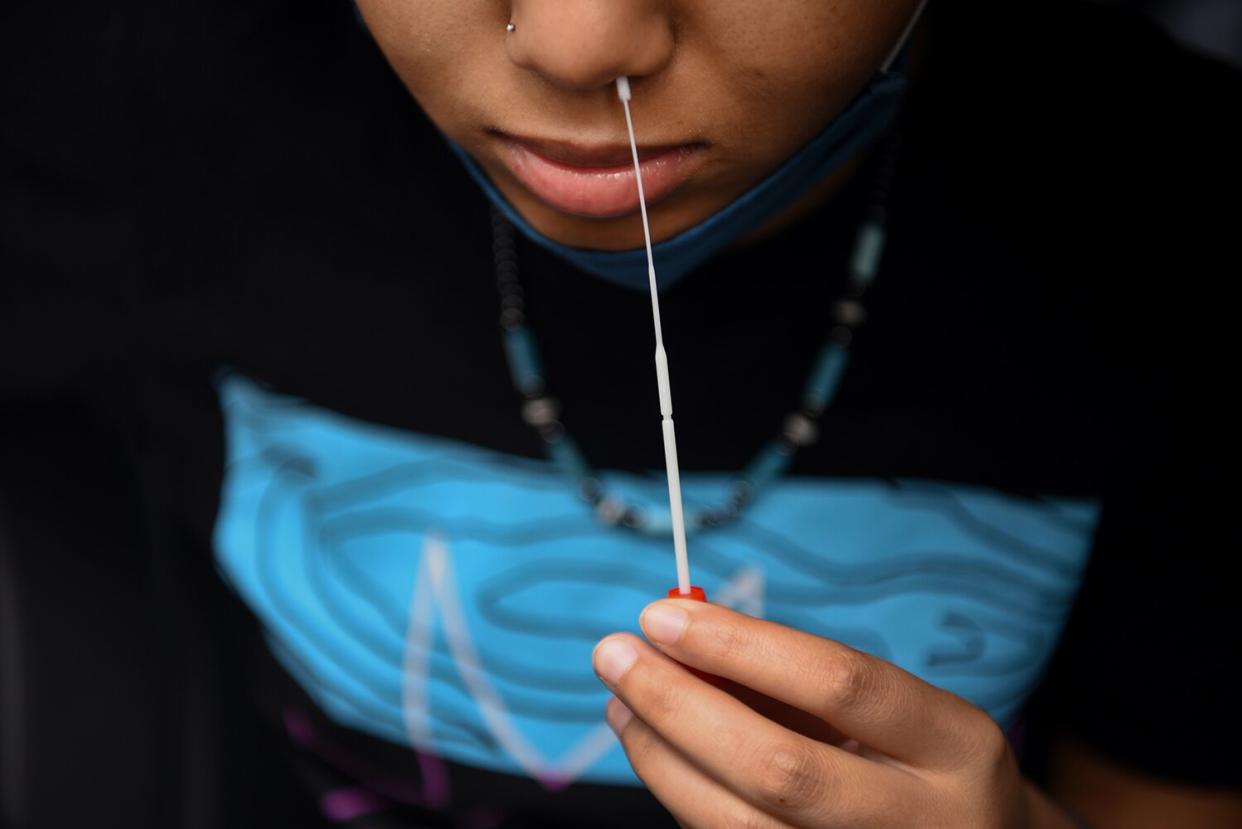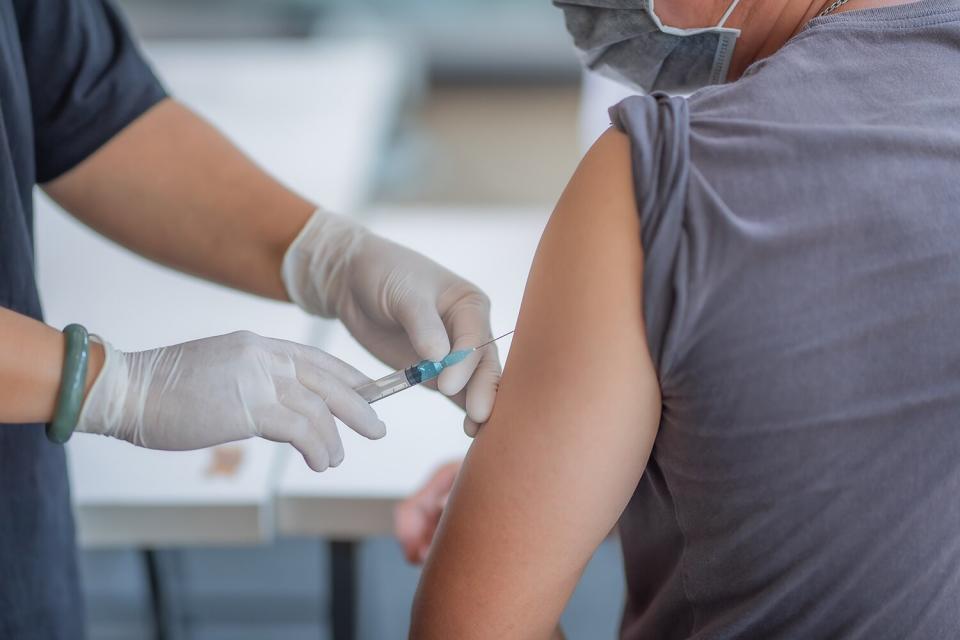What to Know Now About COVID as It Surges Again: 'These Case Numbers Are a Severe Undercount'

Callaghan O'Hare/Bloomberg via Getty COVID testing
It's become a troublingly familiar refrain, but COVID-19 is once again surging in the U.S. After the major omicron spike over the winter months, the variant has mutated — twice, to BA.2 and BA.2.12.1 — and both are spreading rapidly across the country.
This time, though, the U.S. is reacting differently. Mask mandates and mitigation efforts are largely gone and positive tests are often taken at home with rapid antigen testing, meaning they're rarely reported to health departments. That's catching much of the country off guard about the surge.
"To state the obvious, the pandemic is not over," Jessica Malaty Rivera, an infectious disease epidemiologist and senior advisor at the Pandemic Prevention Institute, tells PEOPLE.
RELATED: COVID Cases Are Soaring Once Again with New Omicron Subvariant BA.2.12.1
Here, Rivera shares what to know about the current state of the pandemic, and why it's time to resume mitigation efforts.
It feels like COVID-19 is far more rampant than anyone realizes. Is that the case?
I think people are aware, but I think that there's this cognitive dissonance that's happening because a lot of people are over it. We're dealing with these varaints because omicron has evolved a bunch. Is it uniquely different? No, but it's causing a few dynamics to happen, which is a lot of people are getting sick and a lot of people are getting reinfected.
We're also operating with more blind spots today than we were previously because we are not testing as much. And I would say that we've probably never tested enough since the beginning of the pandemic, but we're especially not testing enough now. These case numbers are a severe undercount because most people are not getting their positive cases reported to the sources that provide those case counts nationwide.
Should people be more cautious now?
I'm encouraging my family and my community to continue to layer high-quality masks when indoors and to avoid unnecessary high-risk things like indoor dining and indoor activities, unless it's absolutely necessary. I think that it's important that people remember that surges don't last forever, and that public health mitigation works best when you are considering each method as a layer of protection.
RELATED: FDA Grants Emergency Use Authorization of Pfizer COVID Booster for Kids 5 to 11
It's also vital that people get vaccinated and boosted. We're not even at 70% fully vaccinated, and we're not even at 40% boosted for those eligible. And we know that the data for boosters is pretty compelling on what it can do to protect you against omicron and the subvariants. Vaccines are not a one-and-done thing — boosters are really important.

Getty A child getting a COVID-19 vaccine dose
There seems to be a sentiment that everyone's just going to get it now — should we just give in to that?
Certainly not. While statistically speaking, everybody may have an encounter with the virus and possible infection with the virus, you still want to avoid it because there's still so many unknowns about who gets long COVID and who doesn't. We can't say with uncertainty who gets long COVID and who doesn't. And I think that that's too much of a risk factor for folks to play that game.
Can people get omicron multiple times?
Yes. A lot of people got sick in the winter surge, and we're at that 90-day mark now for a lot of people to be reinfected. Breakthrough infections shouldn't be a surprise, but the vaccines are still doing their job of keeping people out of the hospital and keeping people alive.
RELATED: Nearly 60% of Americans — and 3 in 4 Kids — Have Now Had COVID, CDC Says
Three months of immunity is not a hard rule. It's statistically more likely that you would not be infected again within a couple months, but that could change again too, based on the dynamics of how these viruses are evolving.
Are the symptoms any different between the omicron strains, or are they similar?
They're pretty similar. This newest subvariant, BA.2.12.1, manifests like a common cold, and one of the most characteristic symptoms is a runny nose, while with the original omicron a sore throat was among the first signs of infection. But not everyone experiences infection the same way.
When can people who have COVID leave isolation?
Neither five days nor 10 days are perfect estimates. Once they are negative on a rapid antigen test for at least two days in a row, 24 hours apart, and are asymptomatic — not resolving symptoms, not mild symptoms asymptomatic — then that's an appropriate time to leave isolation.
Paxlovid [the FDA approved COVID treatment] has kind of changed the game a bit because it's allowing people to have their symptoms resolved as early as one to two days into their treatment and even testing negative on PCR, which is kind of remarkable within three to four days of their treatment. It's a five-day treatment, so if you do test positive, I think it's really important to talk to your doctor to see if you are eligible to get a prescription ASAP, to start it as early as you can in your infection.
RELATED VIDEO: Here are Some Myth-Busting Facts About COVID-19 Vaccines
If someone is eligible for the fourth dose but recently had COVID, should they get the fourth dose now or wait?
If they're in the eligible group, they should get it as soon as possible, because we know that vaccines provide much stronger protection than a recent infection.
Would we be in this place if more people had been vaccinated? Or is it more of an issue of the global vaccination rate?
It's both, but I definitely think it's very concerning that as a country we've never reached that 70% vaccination rate yet and we were hoping to reach 70% in June or July of last year. Which is just deeply depressing.
RELATED: COVID Vaccinations Could Have Saved Around 234,000 American Lives in 2021
The last few variants have all been versions of omicron. Are there any new ones, or any non-omicron variants popping up?
It's possible that we'll see more subtypes of omicron in the future. I'm grateful for the scientists in South Africa who do a remarkable job of isolating and sequencing variants. There are variants of interest that are being investigated and I'm kind of keeping an eye on them too, but nothing that has been identified as a variant of concern by WHO. But that can change any day.


